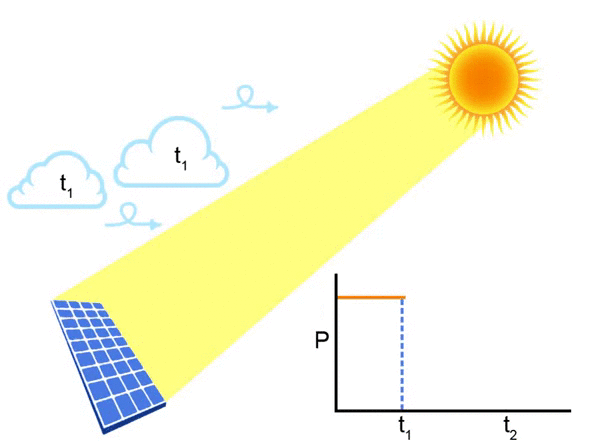Introduction
Why forecast cloud shadows?
Solar forecasting can help solve a number of problems associated with solar energy harvesting:
- High variability of the solar resource, due to movement of
- the sun through the sky
- clouds over the sun
- Efficient and cost effective operation requires reliability and predictability.
- Sharp changes can cause local voltage flicker.
- Underestimating output can lead to balancing and frequency issues.

A number of solar forecasting methods currently exist. Their relevance varies with the size of the photovoltaic application and the desired forecast lead time.
Sky-imager forecasting, or cloud forecasting, is one of these methods. Images of the sky are captured from the ground at regular intervals and forecasts are made in real-time from the series of images.
| Forecasting method | Pros | Cons |
|---|---|---|
| Physically-based | - User-defined inputs and components - Sharing made easy (invariant to geolocation and training) |
- Suffers from insufficient data (inputs) - Coarse resolution O(10km) |
| Satellite imaging | - More direct measure of irradiance vs NWP - Assimilates NWP |
- Coarse resolution O(km) - Requires visible light (IR would help with morning forecast accuracy) |
| Sky imaging | - High spatial and temporal resolution O(min) | - Does not account for cloud development and dissipation - Limited to the SI FOV |
| Stochastic learning | - Can assimilate all discussed methods | - Extraneous or redundant inputs will give inaccurate results (ANNs and GAs can select inputs). |